Featured
Architecture
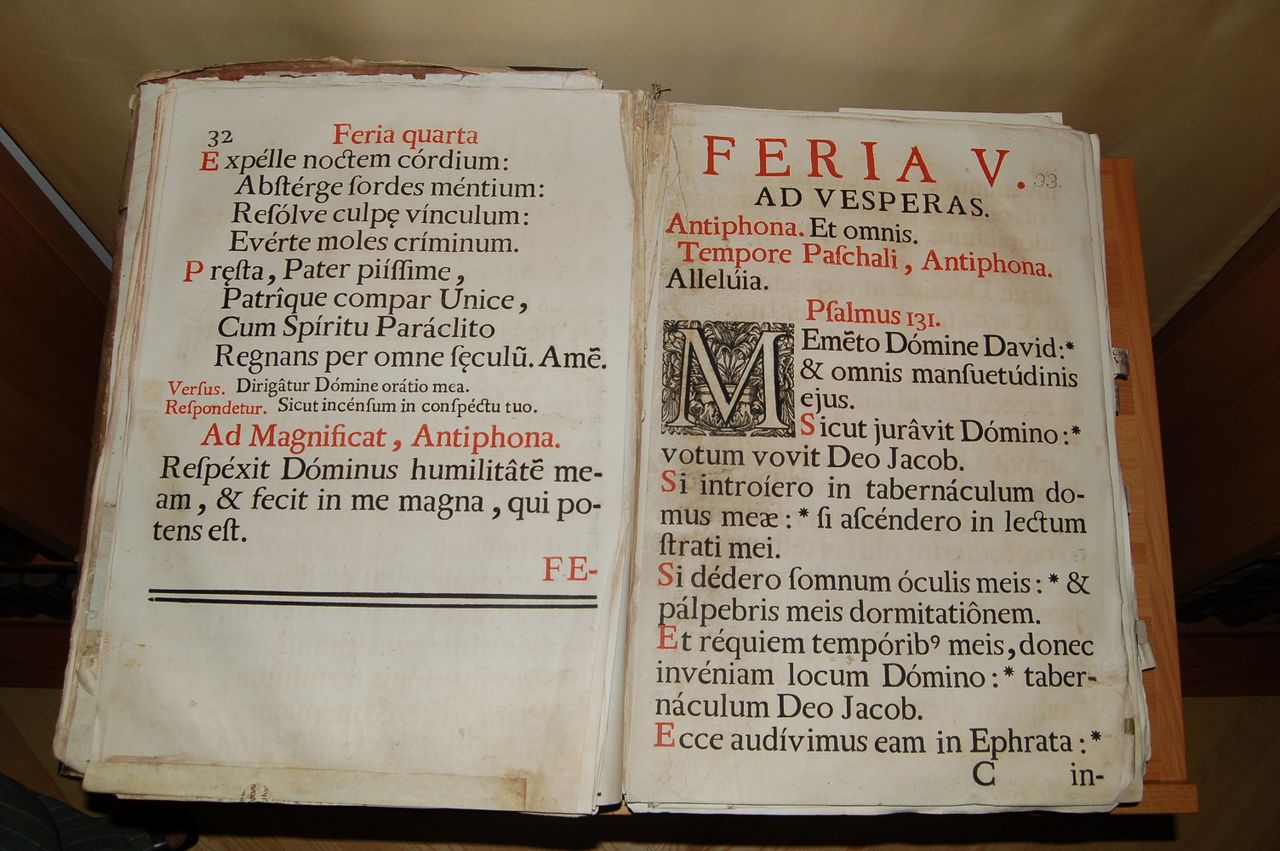 Psalterium (Book of Psalms), Capuchin Monastery Archives and Library, Škofja Loka
Psalterium (Book of Psalms), Capuchin Monastery Archives and Library, Škofja Loka
The Capuchin Monastery Archives and Library, Škofja Loka, dating from the beginning of the 18th century, preserve a precious collection of rare books, manuscripts, and registry data. The most renowned is the manuscript with the Škofja Loka Passion Play.
Dance

Španski borci Culture Centre re-opened in November 2009 in the Ljubljana-Moste neighbourhood of the city. Run by En-Knap Productions, the centre represents the largest facility intended for cultural activities in Slovenia managed by a non-governmental organisation. Providing a much-needed performing space in Ljubljana as well as two rehearsal spaces, the centre's programme focuses on stage arts, however, it also cover the areas of music, visual arts, literature, and offers a children's programme. The centre also includes a reading room, mediatheque, coffee shop and gallery.
As the permanent residence of the EnKnapGroup (EKG) and one of the venues of the Gibanica (Moving Cake) Festival of Slovene Dance, the Španski borci Culture Centre has been slated since June 2011 to become the seat of the new Centre of Contemporary Dance, according to the agreement signed by the Ministry of Culture and the Municipality of Ljubljana.
Design
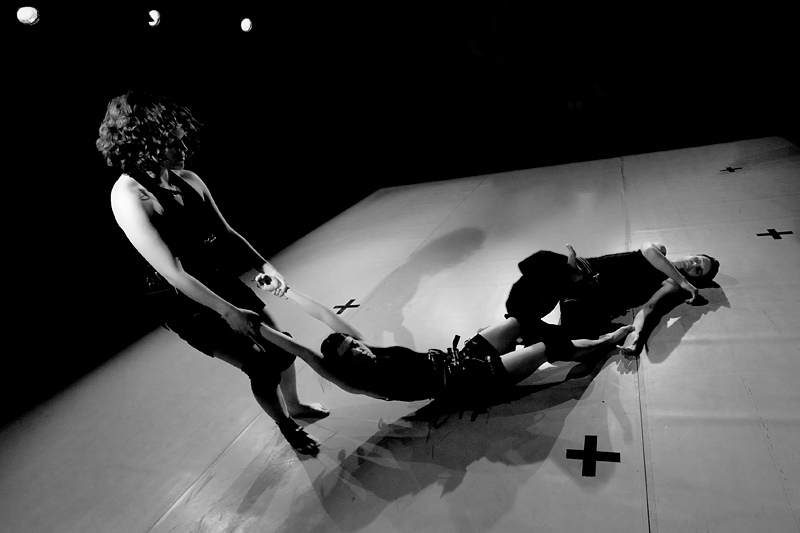 Polnočna presoja (Mindnight Judgement), Plesna izba production, 2009
Polnočna presoja (Mindnight Judgement), Plesna izba production, 2009.
Polnočna presoja (Mindnight Judgement), Plesna izba production, 2009
Polnočna presoja (Mindnight Judgement), Plesna izba production, 2009.
Plesna izba Maribor (Maribor Dance Room) runs an extensive programme of dance and drumming education, yet simultaneously also stages various dance performances and explores contemporary performing arts in general. While some of its stage works feature its protégés, most of the shows are professional contemporary dance performances.
The organisation was established in 1994 by Minka Veselič Kološa, a pioneer of contemporary dance education approaches in Slovenia.
Film
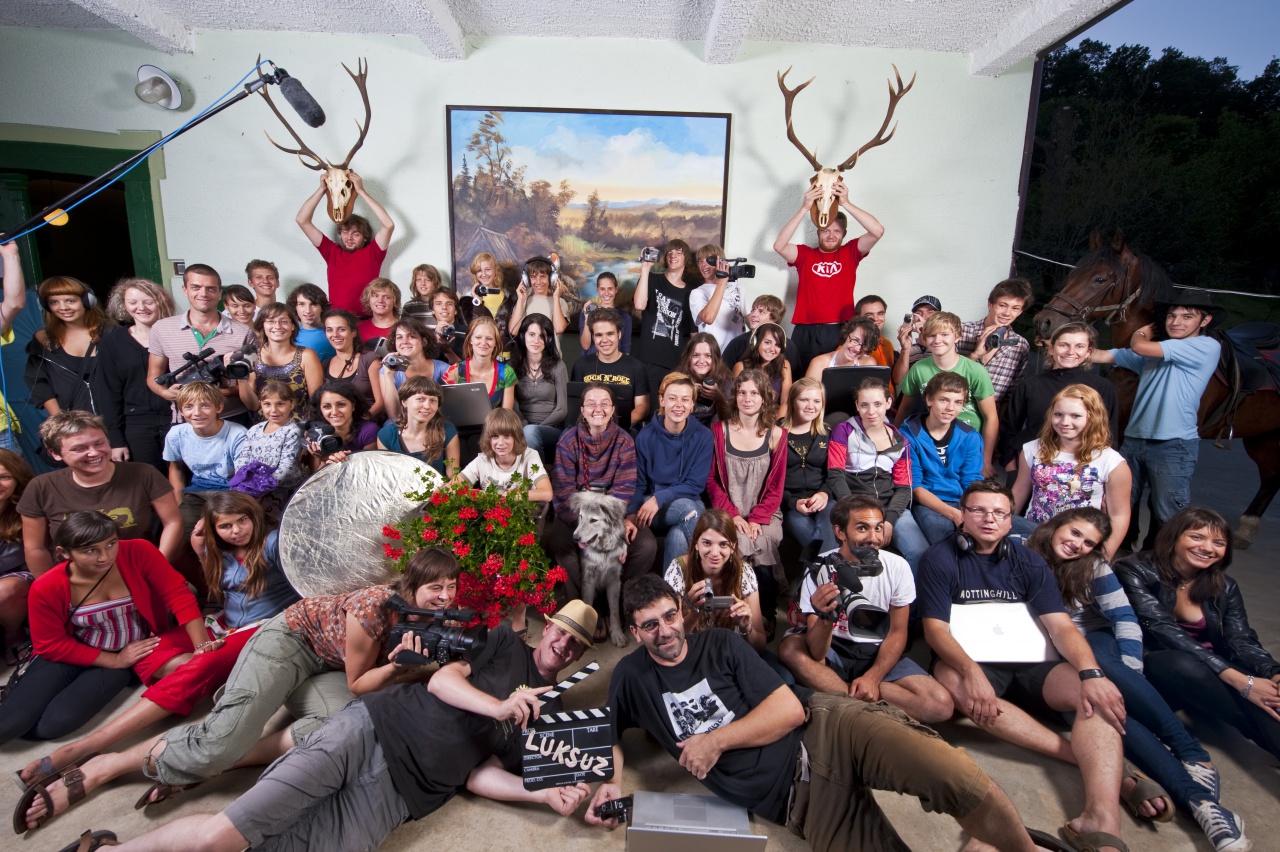 Poster for the Luksuz Cheap Film Festival, established in 2003 by Luksuz Production, as a showcase for short and low-budget film productions by experimental and alternative directors and activists
Poster for the Luksuz Cheap Film Festival, established in 2003 by Luksuz Production, as a showcase for short and low-budget film productions by experimental and alternative directors and activists
Luksuz Cheap Film Festival was established in 2003 by Luksuz Production, the video production arm of the Society of Allies for Soft Landing, Krško (DZMP), motivated by the advent of cheap film production in recent years and the consequent democratisation of media. The festival features some 30 short and low-budget film productions by both domestic and foreign experimental and alternative directors and activists, created in a non-commercial or non-institutional context and offering an alternative to mainstream "Hollywood" and national film productions. Luksuz Festival welcomes films that tackle the subject of society and culture, social critique, cultural diversity and youth culture.
The 2023 edition takes place on the Rajhenburg Castle in Brestanica.
Literature
 Polnočna presoja (Mindnight Judgement), Plesna izba production, 2009
Polnočna presoja (Mindnight Judgement), Plesna izba production, 2009.
Polnočna presoja (Mindnight Judgement), Plesna izba production, 2009
Polnočna presoja (Mindnight Judgement), Plesna izba production, 2009.
Plesna izba Maribor (Maribor Dance Room) runs an extensive programme of dance and drumming education, yet simultaneously also stages various dance performances and explores contemporary performing arts in general. While some of its stage works feature its protégés, most of the shows are professional contemporary dance performances.
The organisation was established in 1994 by Minka Veselič Kološa, a pioneer of contemporary dance education approaches in Slovenia.
Music
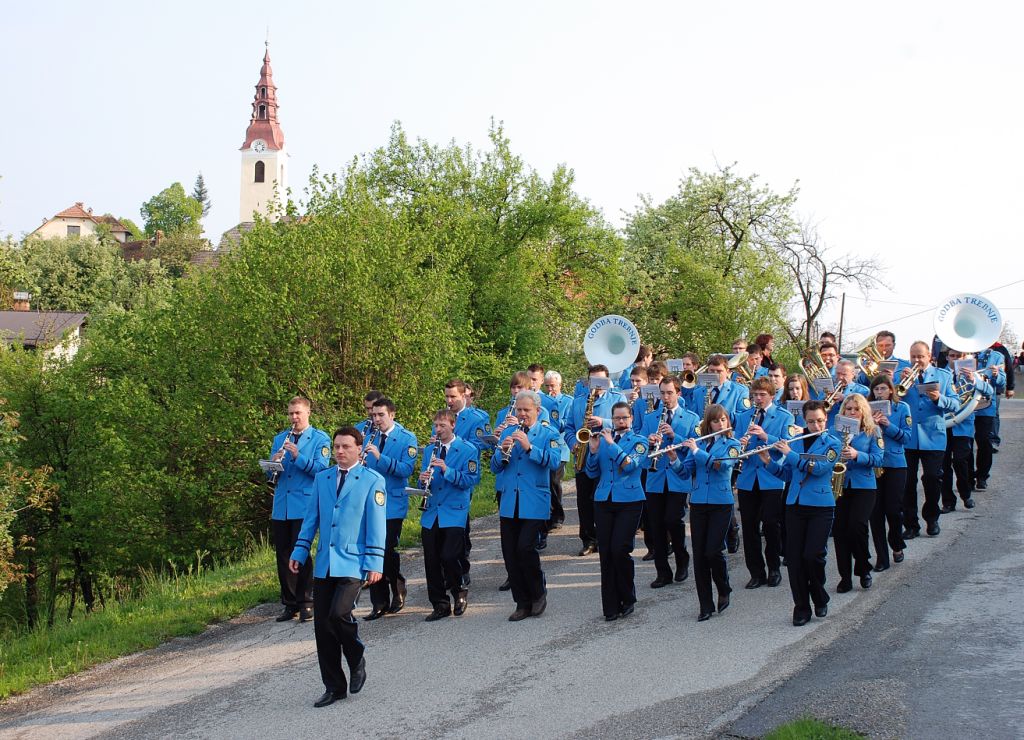 Trebnje Municipal Brass Orchestra
Trebnje Municipal Brass Orchestra
The origins of the Trebnje Municipal Brass Orchestra date back to 1926 when the first brass orchestra was founded in Trebnje. The current orchestra was registered as an association in the 1970s. In 1979 the Trebnje Brass Orchestra appeared in Božo Šprajc's film Krč. It received the Golden Plaque at national competitions in 1992 and 1999 and in recent years it has made guest appearances in numerous festivals and competitions, including at Hammer (Norway), Launingen (Germany), Holten (Netherlands), Castelnuovo del Garda (Italy) and Sarvar (Hungary).
Since 2001 Trebnje Municipal Brass Orchestra has organised three international festivals in Trebnje, featuring guests from Launingen, Castelnuovo del Garda, and Velika gorica, as well as some Slovene brass orchestras.
New media art
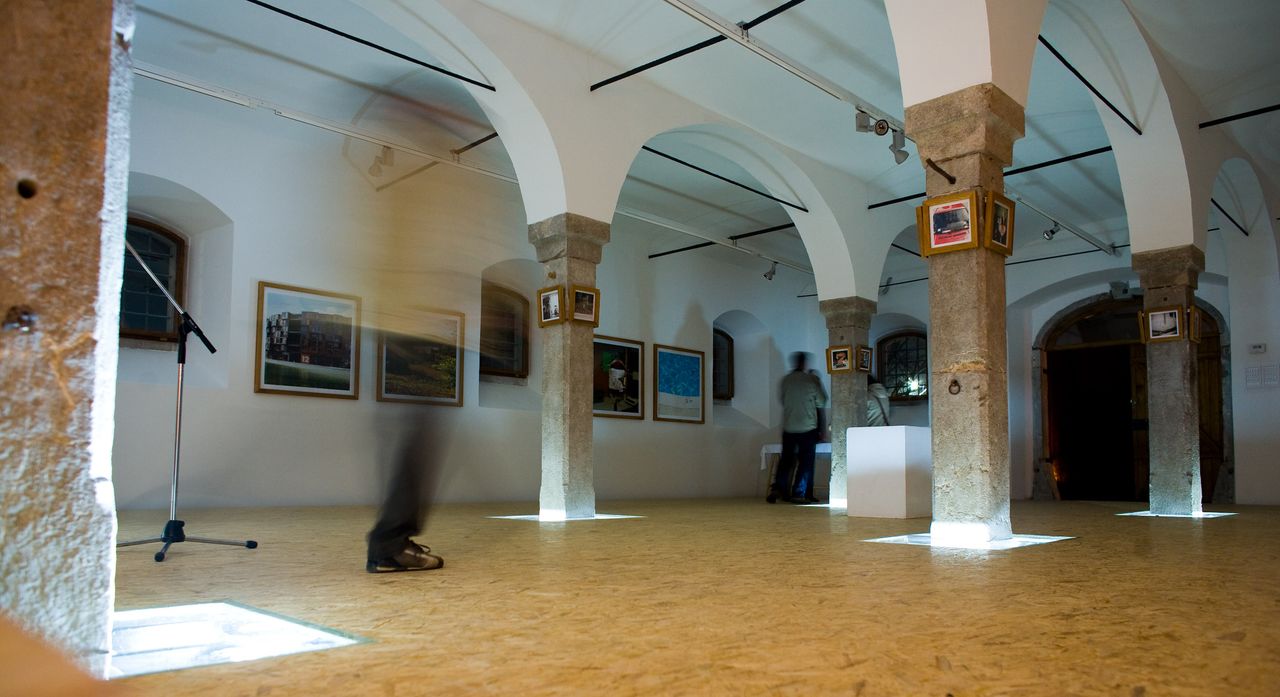 Inside of Simulaker Gallery in Novo mesto
Inside of Simulaker Gallery in Novo mesto
Established in 2006 as a non-profit space, the Simulaker Gallery has grown into the most important space for presentations of contemporary art practices in the southeast region of Slovenia. Located in the old town centre of Novo mesto in a 160-square-metre renovated stable for horses, the programme was initially run by curator Iztok Hotko. In spring 2009 the gallery initiated an annual project entitled The First Chance, presenting artworks of art students from art departments round Slovenia or internationally.
The gallery collaborates also with the local branch of the Union of Slovene Fine Arts Associations and Fotopub Festival of Documentary Photography.
Theatre
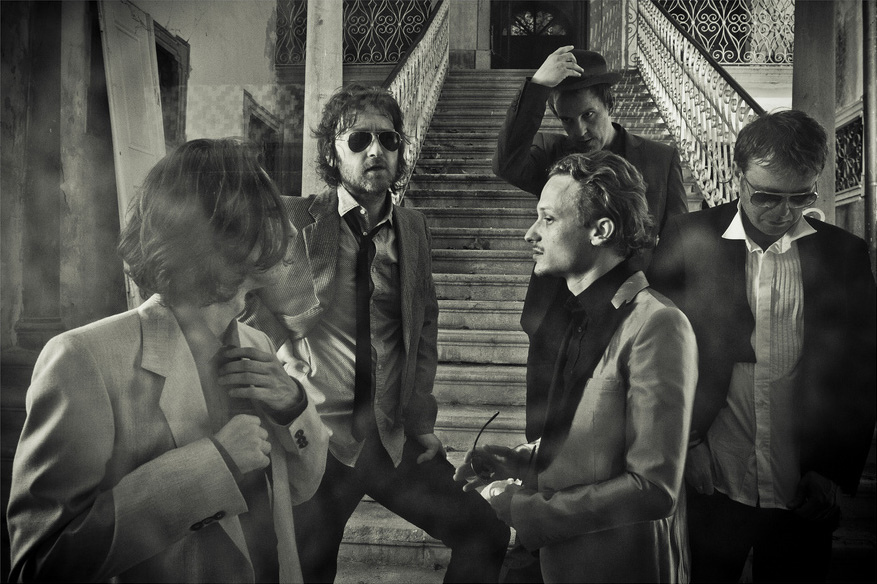 Group portrait of Slovene music group Big Foot Mama, the most followed Slovene rock band in the past 20 years
Group portrait of Slovene music group Big Foot Mama, the most followed Slovene rock band in the past 20 years
Big Foot Mama is in every sense the most followed Slovene rock band in the past 20 years. They were originally established in 1990 as a high school band with affinities for rock'n'roll music (The Rolling Stones, The Cult, The Black Crowes). In January 1991 the band adopted the name Big Foot Mama and started recording their own albums. After their third album Tretja dimenzija [The Third Dimension] (1999), they were considered the rock/pop band of the decade, breaking sales records in the rock category and selling out some of the biggest venues in the capital of Ljubljana such as Križanke and Tivoli Hall (Hala Tivoli), which had previously been considered as unconquerable for Slovene rock bands. Their last album from 2007 is ambiguously called Važno, da zadane [As Long as it Hits]. The band has been touring and performing in all venues possible across Slovenia, from small clubs, pubs to big festivals. It sticks to rock lyrics in Slovenian and its slang alterations. In the year 2010 they celebrated their 20th anniversary with a documentary film about the band’s career, called Tist' dan v tednu [That Day of the Week]). Currently the band is working on their 7th album that's due to come out in 2012. They already launched 2 new singles: Pot iz trnja [The Path out of Thorns]) and Umazan dež [Dirty Rain].
Visual arts
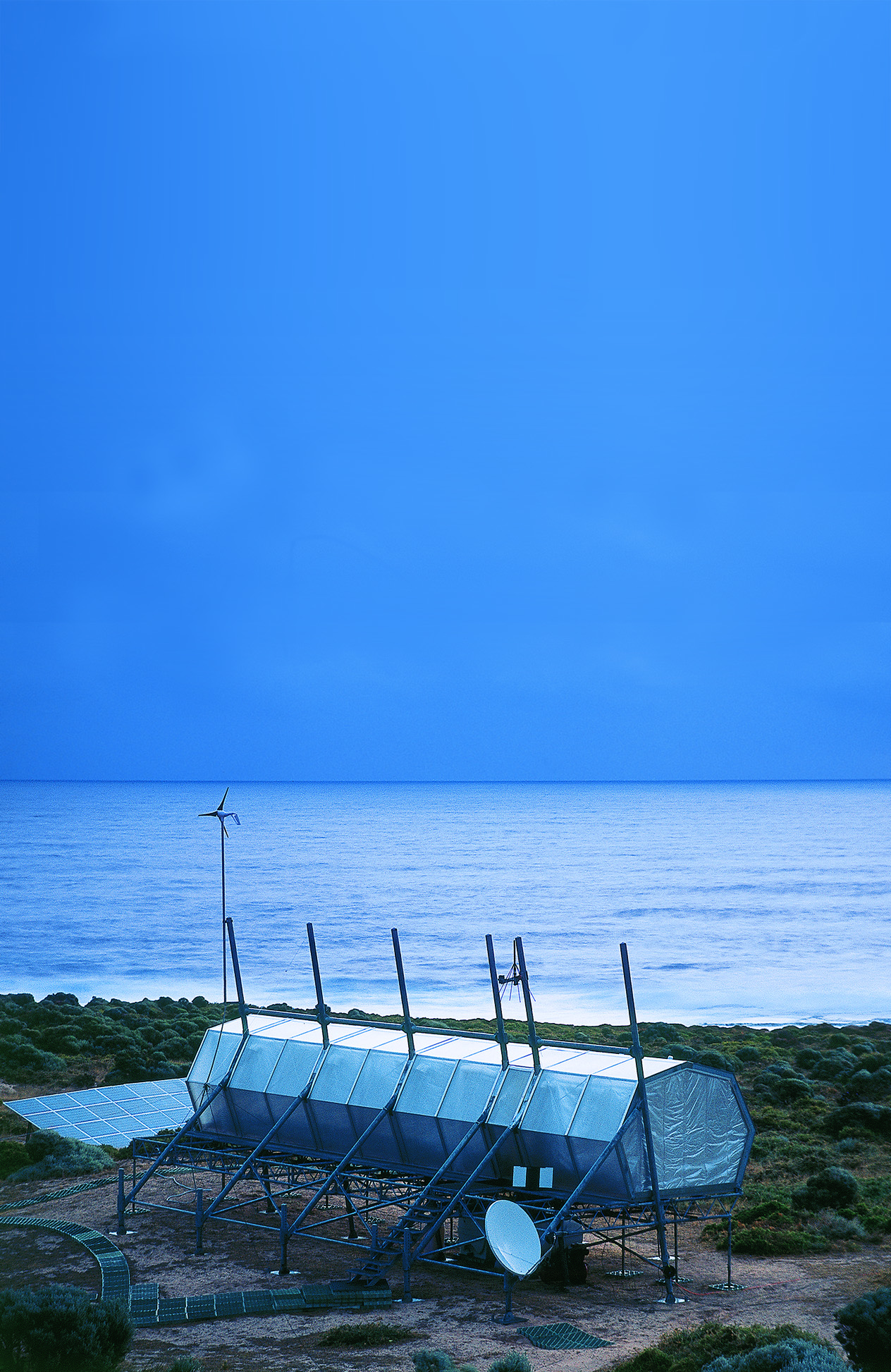 Makrolab at Isola di Campalto in the Venice Lagoon as part of the Biennale di Venezia 2003
Makrolab at Isola di Campalto in the Venice Lagoon as part of the Biennale di Venezia 2003
Projekt Atol is a non-profit cultural institution founded in 1992 by Slovene conceptual and new media artist Marko Peljhan and officially registered in 1994. Its activities range from art production to scientific research and technological prototype development and production. The technological arm of Projekt Atol, called PACT Systems (Projekt Atol Communication Technologies), was founded in 1995, and the flight operations branch, Projekt Atol Flight Operations, was founded in 1999 to support art and cultural activities in the atmosphere, in orbit, and beyond.
Projekt Atol serves as the institutional, financial and logistics support frame for several projects and initiatives, such as its Makrolab project and the recent Arctic Perspective Initiative.
Marko Peljhan represented Slovenia at the 58th Venice Biennale in 2019.
Intangible heritage
1280pxThe KOAX Unmanned Aerial Vehicle, Red Dot Design Award 2010, presented at the Month of Design 2010
Organised since 2003 by Zavod Big (a.k.a. BIG SEE), the Month of Design is a collaboration between successful companies and their design strategies, designers and developers with a business vision, and brand experts, who know how to capture market imagination. This internationally acclaimed festival of product design, interior architecture and fashion is held in Ljubljana every autumn from October till November.
Monuments and sites
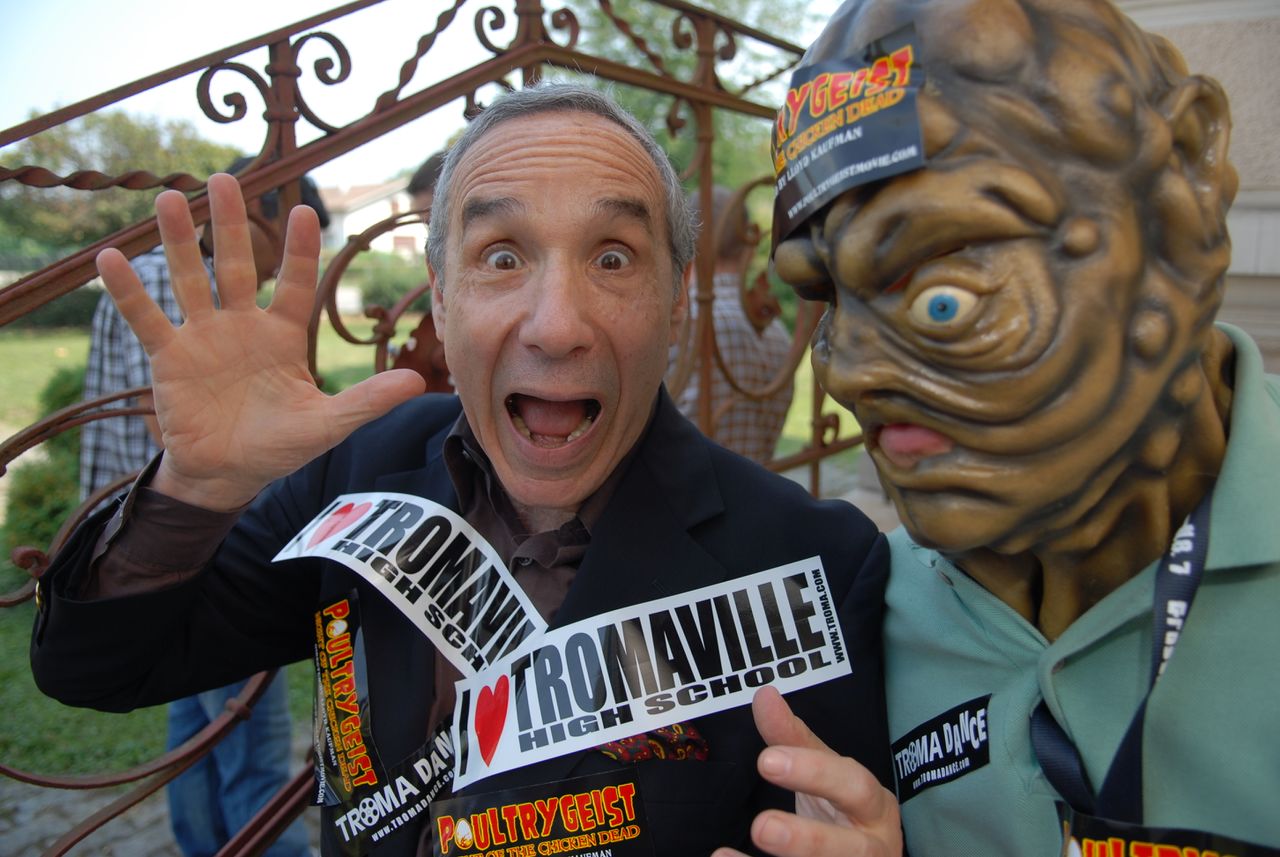 Lloyd Kaufman creator of The Toxic Avenger with film mascot at the Grossmann Fantastic Film and Wine Festival 2007
Lloyd Kaufman creator of The Toxic Avenger with film mascot at the Grossmann Fantastic Film and Wine Festival 2007
The Grossmann Fantastic Film and Wine Festival is a specialised competitive festival focusing on contemporary genre film production, mostly on those of horror and fantasy films. It was launched in 2005 on the 100th anniversary of Slovene cinema and is dedicated to Dr. Karol Grossmann (1864–1929), the pioneer of Slovene cinema who made the first film shots in 1905. The Festival takes place annually in July in different locations in the city of Ljutomer and was named one of the "30 Bloody Best Genre Fests in the World", according to MovieMaker Magazine. The call for eligible films is usually open from January till May. The 2020 edition is held in Ormož (10-12.7.), then in Ljutomer (14-18.7.).
Museums
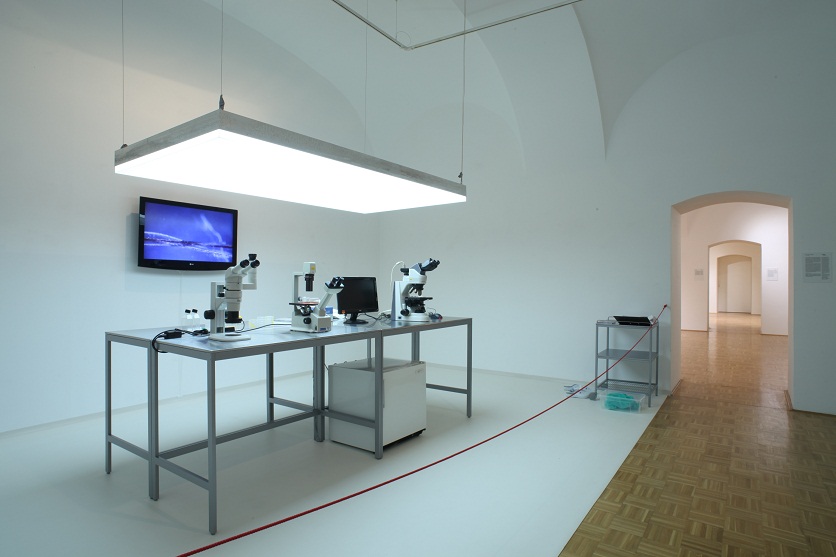
Established in 1993, the Celje Gallery of Contemporary Art is situated on the outskirts of the old town centre and is part of the architectural complex of buildings that once formed the foothill castle of the Counts of Celje. Since 2005 it is managed by the Celeia Celje Institute - Centre for Contemporary Arts as its principal exhibition space. Annually the venue hosts up to 10 exhibitions addressing specific themes or offering a thorough monographic presentation of individual artistic positions. The exhibitions are usually prepared by the house curators although the Centre for Contemporary Arts also collaborates with foreign experts and offers a working platform for guest curators through its artist-in-residence programme AiR Celeia Celje.


